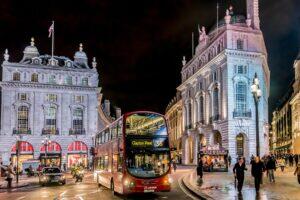Fodor's Expert Review Downing Street
Were it not for the wrought-iron gates and armed guards that block the entrance, you'd probably miss this otherwise unassuming Georgian side street off Whitehall—but this is the location of the famous No. 10, London's modest equivalent of The White House. The Georgian entrance to the mid-17th-century mansion is deceptive; it's actually a huge complex of discreetly linked buildings. Since 1732 it has been the official home and office of the prime minister—the last private resident was the magnificently named Mr. Chicken (the current prime minister actually lives in the private apartments above No. 11, traditionally the residence of the Chancellor of the Exchequer, the head of the Treasury). There are no public tours, but the famous black front door to No. 10 is clearly visible from Whitehall. Keep your eyes peeled for Larry the cat, whose official title is Chief Mouser to the Cabinet Office.
Just south of Downing Street, in the middle of Whitehall, is the Cenotaph, a stark... READ MORE
Were it not for the wrought-iron gates and armed guards that block the entrance, you'd probably miss this otherwise unassuming Georgian side street off Whitehall—but this is the location of the famous No. 10, London's modest equivalent of The White House. The Georgian entrance to the mid-17th-century mansion is deceptive; it's actually a huge complex of discreetly linked buildings. Since 1732 it has been the official home and office of the prime minister—the last private resident was the magnificently named Mr. Chicken (the current prime minister actually lives in the private apartments above No. 11, traditionally the residence of the Chancellor of the Exchequer, the head of the Treasury). There are no public tours, but the famous black front door to No. 10 is clearly visible from Whitehall. Keep your eyes peeled for Larry the cat, whose official title is Chief Mouser to the Cabinet Office.
Just south of Downing Street, in the middle of Whitehall, is the Cenotaph, a stark white monolith built to commemorate the 1918 armistice. On Remembrance Day (the Sunday nearest November 11), it's strewn with red poppy wreaths to honor the dead of both world wars and all British and Commonwealth soldiers killed in action since. A hundred yards farther, toward Parliament, is the Monument to the Women of World War II. The prominent black-marble sculpture uses a string of empty uniforms to symbolize the vital service of women in then-traditionally male jobs during the war, as well as in frontline roles, such as medics and auxiliary officers.
READ LESS








